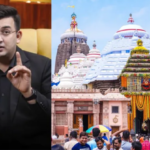Vikram lander goes to sleep on Moon, Isro hopes to wake it up on September 22
NEW DELHI,SEPT 4: The Indian Space Research Organisation (Isro) has confirmed that the Vikram Lander of the Chandrayaan-3 mission has been set into sleep mode.
The transition occurred at approximately 8 am IST, marking a significant milestone in the mission’s timeline.
Named after Dr. Vikram A Sarabhai, the father of the Indian Space Programme, the Vikram Lander was designed to function for one lunar day, equivalent to about 14 Earth days. Prior to entering sleep mode, the lander performed in-situ experiments using ChaSTE, RAMBHA-LP, and ILSA payloads at its new location on the moon’s surface. The term “in-situ” refers to data collected adjacent to the measuring instrument, providing direct, unfiltered information about the lunar environment.
The data collected from these experiments has been successfully received back on Earth, contributing to the mission’s primary objective of tracing the location and abundance of lunar water. With the completion of these operations, the payloads have now been switched off, while the lander receivers remain active.
The Vikram Lander is not alone in its lunar slumber. Its companion, the Pragyan Rover, has also been put into sleep mode.
Both the lander and the rover will remain in this state until the solar power is replenished and the onboard batteries are recharged. This is expected to occur around September 22, when the Sun rises over the lunar south pole.
The Chandrayaan-3 mission has already achieved remarkable feats, including a successful second soft landing with a hop on the Moon. The mission has conducted numerous scientific experiments around the lunar south pole, where ice and other resources are abundant.
As the world awaits the awakening of Vikram and Pragyan, the Chandrayaan-3 mission continues to foster the findings of its predecessor, Chandrayaan-1, and contribute valuable insights into our understanding of the moon.
The success of this mission further cements India’s position as a key player in space exploration, following in the footsteps of the US, China, and Russia.
-PTI





